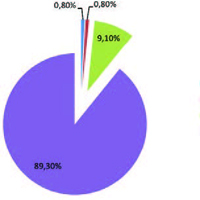A clinico-epidemiological profile study of venereal genital dermatoses in a tertiary hospital in southern Nigeria: A 5-year review

All claims expressed in this article are solely those of the authors and do not necessarily represent those of their affiliated organizations, or those of the publisher, the editors and the reviewers. Any product that may be evaluated in this article or claim that may be made by its manufacturer is not guaranteed or endorsed by the publisher.
Accepted: 10 June 2021
Authors
Venereal genital dermatoses are cutaneous morbidities contracted and transmitted by sexual contact. They are caused by microorganisms that survive on the skin or mucous membranes, or that are transmitted via semen, vaginal secretions, or blood during sexual intercourse. Data on pattern of presentation and diagnoses of venereal genial dermatoses are limited in Nigeria. The aim of this study was to determine the pattern of presentation of venereal genital dermatoses over a 5-year period in the University of Benin Teaching Hospital (UBTH), Benin City, Edo State, Nigeria. Information extracted from patients’ medical records included socio-demographic data, duration of symptom, distribution of lesions, symptomatology and diagnoses of the venereal genital dermatoses. There were 121 patients with venereal genital dermatoses amongst 1600 new cases seen over the 5-year period constituting a prevalence of 7.6%. The male:female ratio of the study population was 1.5:1 and their mean age was 26.2 ± 10.5 years. The predominant symptoms at presentation were abnormal genital growth in 108 (89.3%), genital ulcer in 12 (9.9%), and genital pain in 11 (9.1%). The common venereal genital dermatoses were anogenital warts in 108 (89.3%) and genital herpes in 11 (9.1%). Venereal genital dermatoses are a relatively common dermatological presentation in UBTH and anogenital wart was the most common type. Venereal genital dermatoses were more common in the young age group and males. The most predominant site of affectation was the vulva in females and penis in males.






